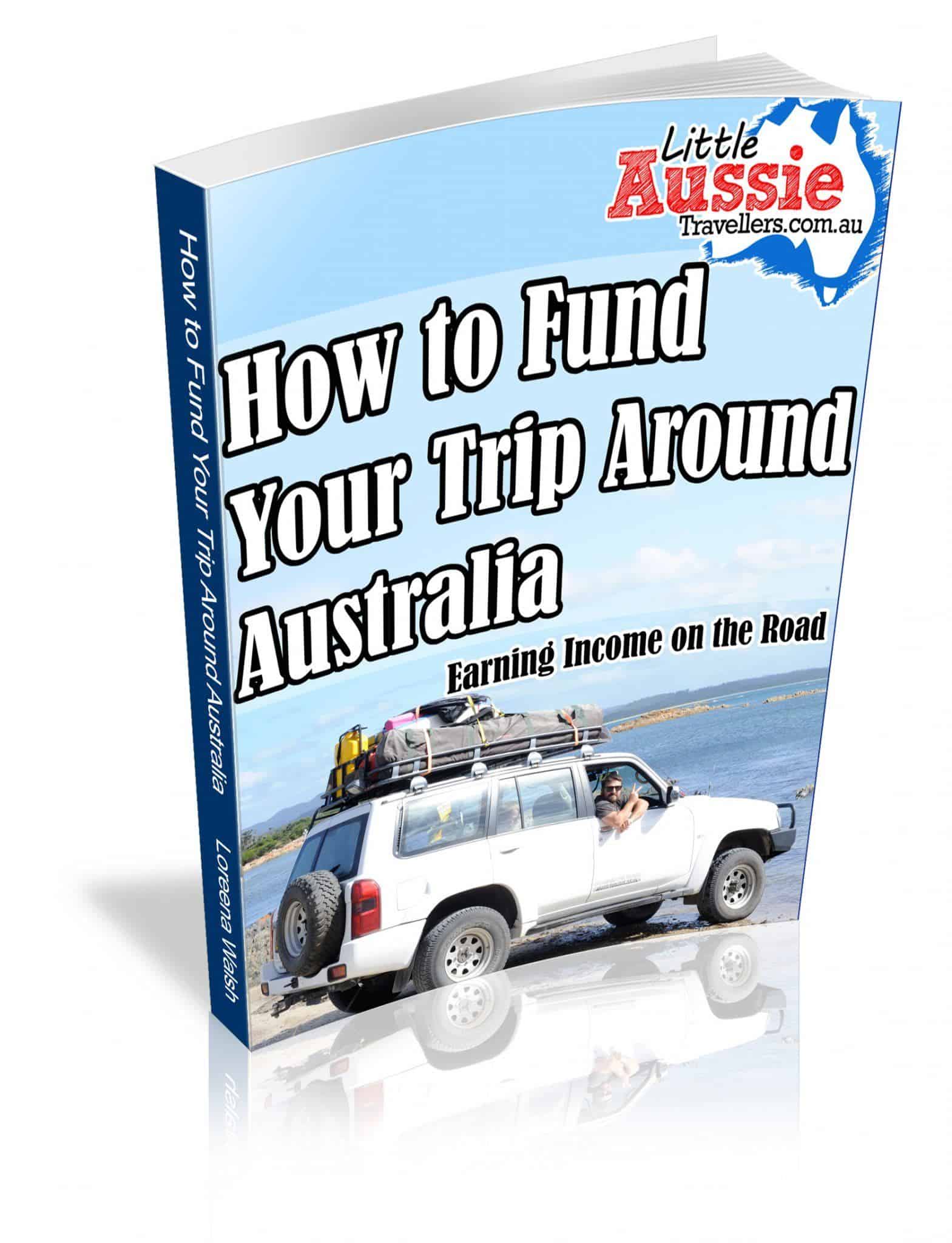
by Loreena Walsh | Finances & Obligations, Income & Finances
One of the biggest considerations for families wanting to travel Australia long term is the ability to find and maintain work while on their road trip of a lifetime. Fruit picking and harvesting work is a common income stream for travellers, so it helps to have a yearly guide to where and when this work is available.
Working your way around Australia extends the amount of time you’re able to travel, and gives most families more of a chance to hit the road in the first place. It removes the need to have massive amounts of money saved, and creates a travel itinerary based around slow travel, where time and experience, immersion within communities and a lifestyle change, rather than a fast-paced holiday.
We get a lot of questions asking when to travel to which Australian regions to access jobs such as fruit picking, harvest work, and farm work that tends to be quite seasonal.
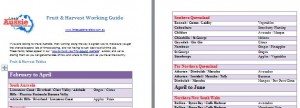 As part of our best-selling ebook “How to fund your trip around Australia“, we included a handy calendar based fruit picking and harvest table which shows a break down of regions offering harvest, fruit picking and farm work around Australia, as well as the times of year they are likely to be looking for workers.
As part of our best-selling ebook “How to fund your trip around Australia“, we included a handy calendar based fruit picking and harvest table which shows a break down of regions offering harvest, fruit picking and farm work around Australia, as well as the times of year they are likely to be looking for workers.
Because those people who have purchased the e-book via the Amazon Kindle, or similar platform may have problems with the formatting of the tables on their device, we’ve included them on site here as a handy .pdf file so that everyone can grab it and print off as a resource to use during their travels.
Click below to download your file, and check out our ebook for more great info on funding your travels.


by Loreena Walsh | Family Travel
There’s that old saying you don’t know what you have until you lose it, and it seems I’ve discovered that really is true, I’d never really thought of travel at home as something I’d be crazy about!
When we left the Mid North Coast, it was with a hint of defiance in our attitudes, one that said we’d never return; we were off to discover grander, more amazing things around Australia. So, other than short visits, we spent a couple of years ignoring our home region and instead savouring inland New South Wales and Tasmania, both of which are amazing areas in their own right and both are regions we’ll return to again and again.
The one thing I didn’t expect when we stopped home for a while was just how much I’d come to realise how amazing this area is.
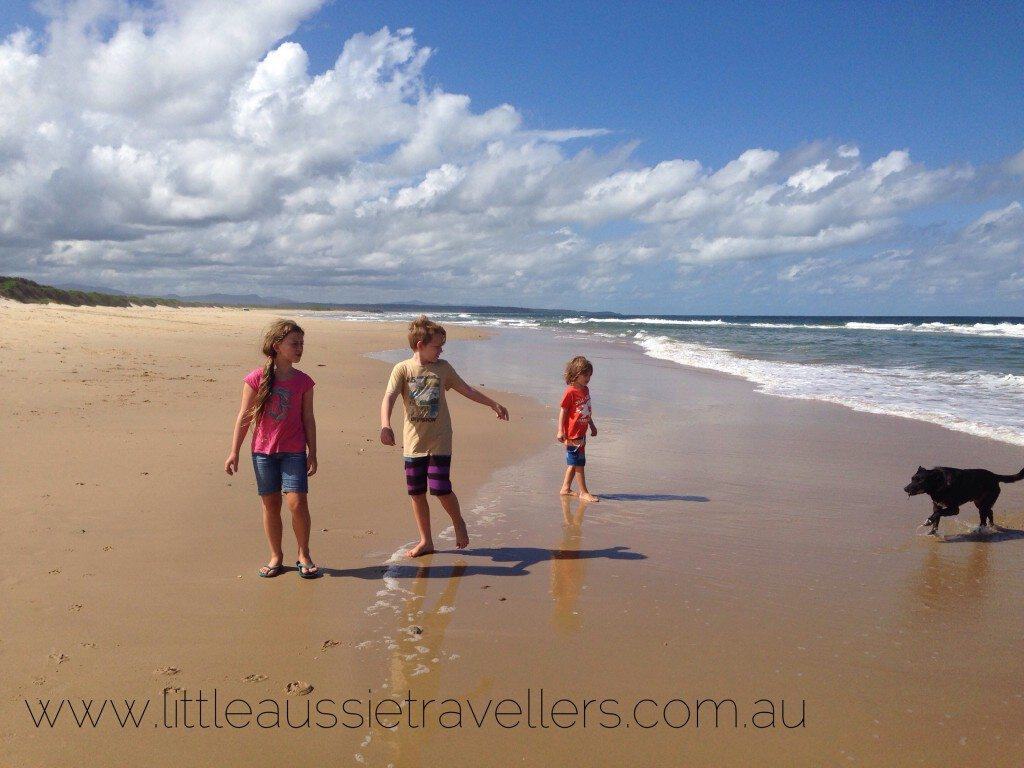
When you live somewhere, you become a little desensitised to it’s awesomeness. So lately we’ve been heading out and exploring all the areas we’ve taken for granted over the years and discovering the beauty of beaches and bushwalks with the kids that we hadn’t stopped to enjoy when we were working and rushing through life when we had our business.
I’m sure, like us you’ve likely ignored some amazing places that are just around the corner from your home. If you’re sitting and waiting impatiently to begin your trip around Australia then don’t be disheartened and frustrated, seek out things close by. If you’ve finished your trip, then you know you’ve likely been ignoring lots of great places.
1. Seek out Museums, Galleries and Cultural Displays
I hate to admit this, but we’ve never taken the kids to some of the most wonderful historical displays in Port Macquarie. We’ve never visited the maritime museum, or Innes ruins (even though my family came to the area via a distant grandmother working for Major Innes there) and the list goes on. We tend to gravitate to these sorts of places when we’re exploring other regions so it’s high on my priority list to do before we leave again, and you should make it high on your priority list to get out and explore and learn about history and culture of the region you live.
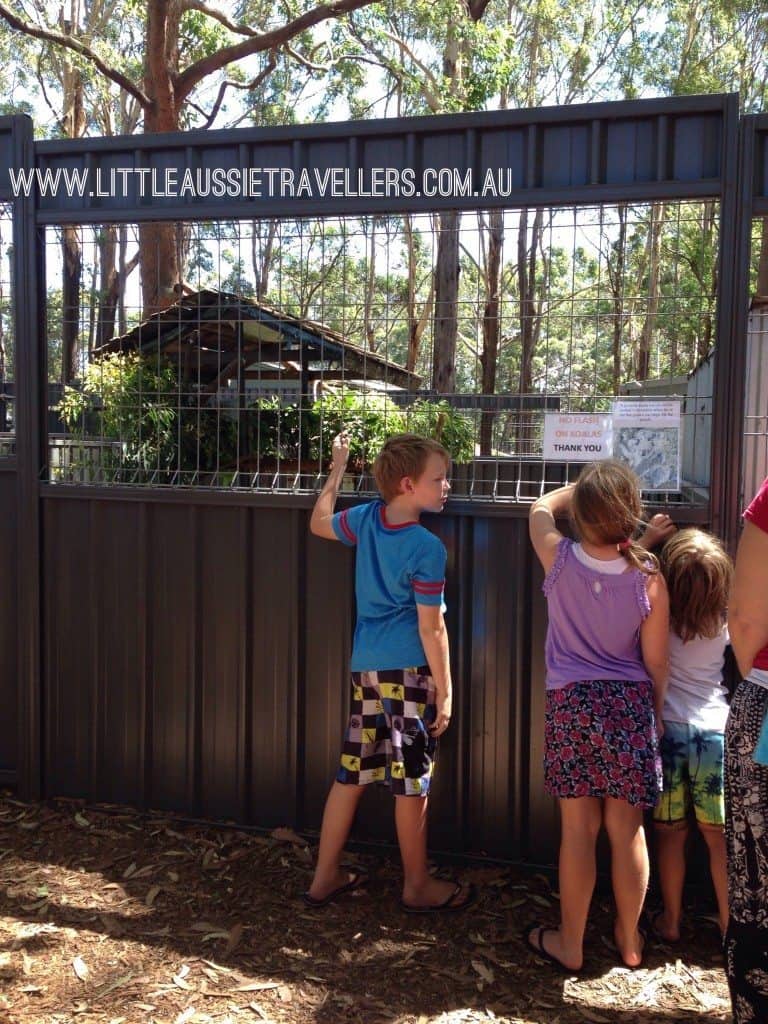
2. Volunteer & Meet the Community
This is also something high on my list, both around our local area and when we are out on the road, and our children are getting old enough to volunteer too. Not only does volunteering give back to the community, it also helps you to meet people you may not otherwise meet, and learn about areas of the community you might not otherwise have the chance to. Whether it’s a soup kitchen, animal shelter or environmental organisation there’s lots of things to get involved with that might just surprise you!
3. Find hidden nooks and secret spots
I’m still learning about new areas around the Mid North Coast, and the best way to uncover hidden spots is to get chatting to other locals. Get out of your comfort zone and steer clear of all the places you gravitate to out of habit; instead track down new walking trails, beaches, stores, interest groups or attractions and give them a try.
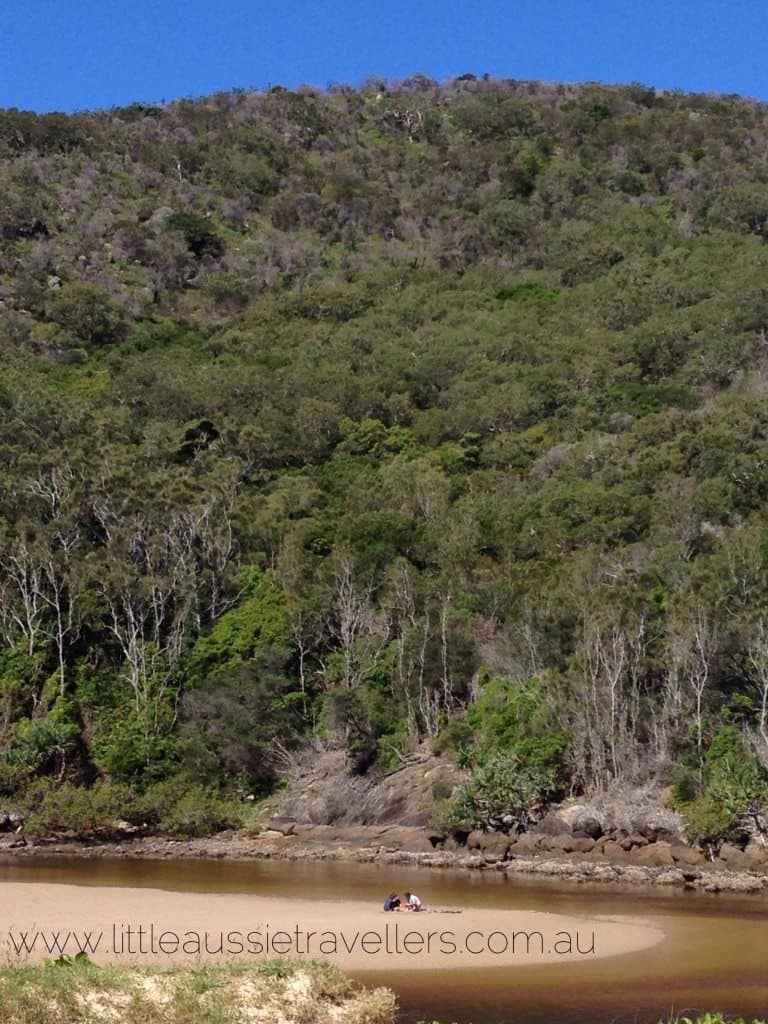
4. Visit the places the tourists go in your home town.
We’d never been to Dolphin Marine Magic despite it being only 1 1/2 hours from home all these years, and when we took the time out to experience it, well we were so overjoyed that we’ve been raving about it to everyone. We did the same with the Port Macquarie Koala Hospital. We’d been once when the kids were quite small, but recently we met up with another travelling fmaily who wanted to take a look through, so we thought it would make a great meeting place and headed out for the afternoon for the free tour. The kids learned new things, so did I, and we donated some money towards a really awesome cause.
5. Make time to explore.
It’s really difficult when you’re balancing work, kids and other commitments to find the time and energy to get out and about. Set aside a day, or even a morning or afternoon to have a mini family break to head out and do something new or even something that’s a long time favourite. It’s amazing when we’re visiting a new area how much time we make for exploring
Do You have tips for travelling at home with kids, and uncovering awesome attractions and things to do?
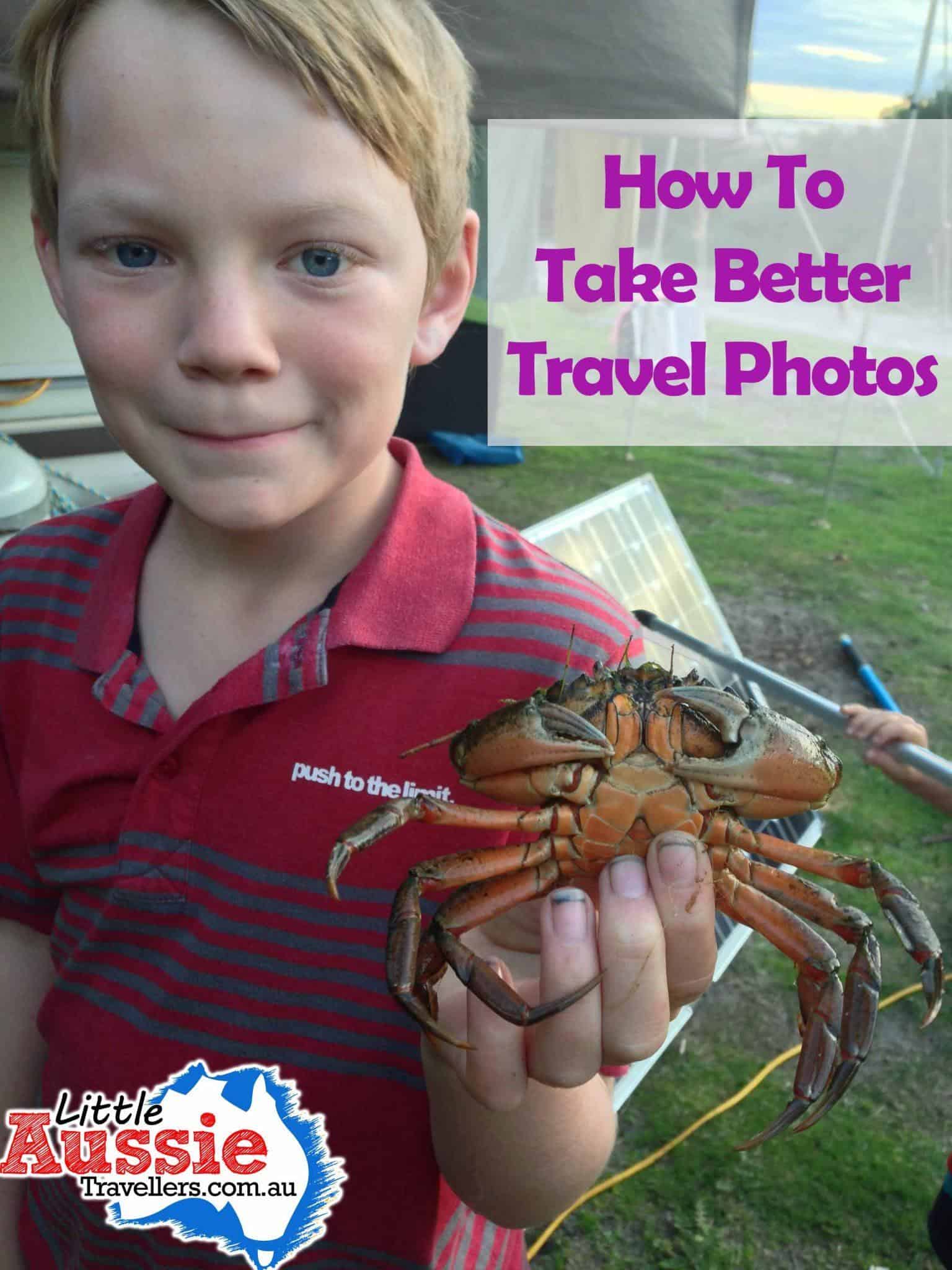
by Loreena Walsh | Photography
The photos you capture during your family holidays will spark years of conversations and memories and be the catalyst for hours spent reminiscing in the future, so it makes sense to take the best photos you can while you have the chance to capture your experiences forever. We carry a range of photography gear with us, including a digital SLR, waterproof point and shoot camera, a Go-Pro camera and a video camera, as well as our iPhones, but really, no matter what we’re shooting with the principles are still the same to get your photos looking their best, so here’s our tips for how to take better family travel photos:
Learn the Basics of Photography
Although rules are meant to be broken, there are some simple principles for taking better photos. There are online photography courses available that you can do while you’re travelling or before you go if you’d like to learn in depth photography skills, which will help not just for your travel photos but for all your photography. There are some basic photography concepts that will help get you started:
None of the photos I’m using below are award winning travel photos, in fact they are mostly snapshots off our phone, but I simply wanted to give you an example, and I don’t have my hard drive with our “fancy” SLR photos on hand.
Fill The Frame:
This is one of the most basic concepts of better photography; get in close and capture the real spirit of the photo. Of course if you’re taking a landscape shot, this isn’t going to apply, shoot wide in that case and take in the spirit of the landscape, but for people, get in close, capture their expression, the place, and cut out all the boring sky or backdrop that isn’t essential to tell the story. If I’d stood back to take the photo of Jackson with the crab, I’d have missed the detail; his expression as he’d almost been nipped, his dirty fingernails from hanging out on the bank of the water, building and playing and fishing, and of course the crab.
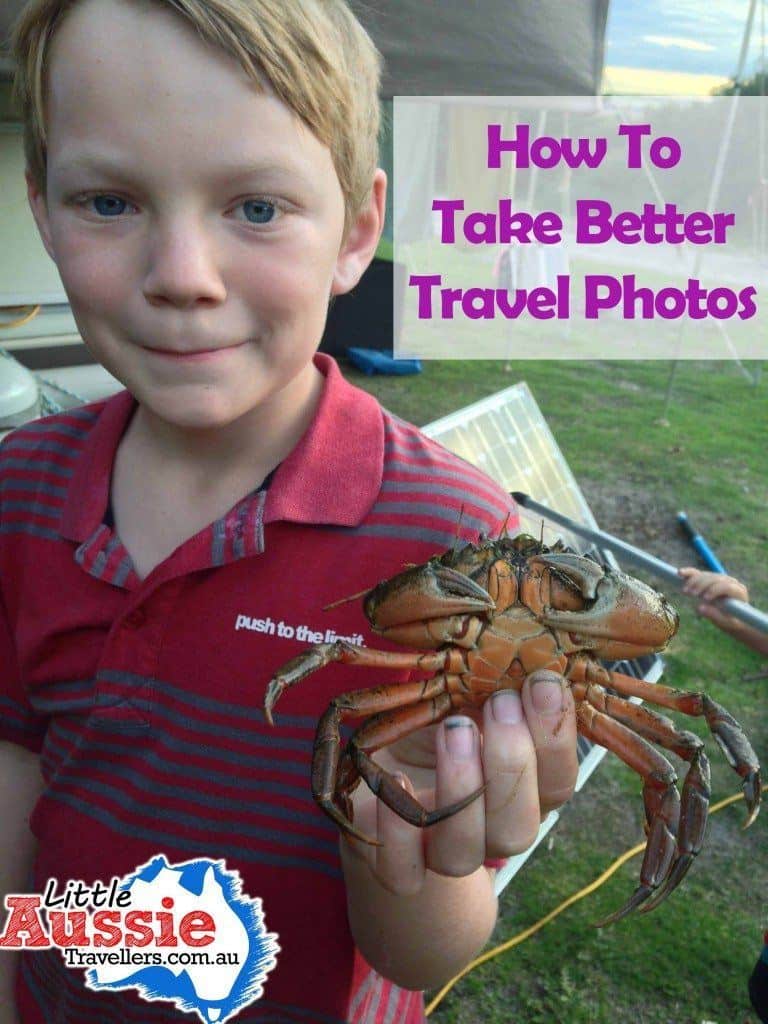
Face the Subject into the Light
You’ve all been part of a photo where you’re ushered into speckled shade or faced away from the sun. It’s never comfortable to stare into the sun, but it is important to have lighting on a person’s face if you’re trying to take a portrait. Photos in direct sunlight are always difficult to get balanced as far as lighting goes, so if you’re taking portraits, the perfect thing to do is to place the person in solid shade, not speckled shade if you can help it, but looking out to the direction of the sun or light source so that their face is lit.
Rule of Thirds:
While it might sound technical, the rule of thirds helps to produce photos that are more pleasing to look at and are well-balanced. Break the habit most amateur photographers have of wanting to put people, or objects in the centre of the photo. Many camera viewfinders have lines breaking the area up into 3, if not, imagine they are there, and place subjects on one of the dividing lines. Our eyes are drawn to those points in a photo, and it works to put people’s faces there particularly well. Here’s an example below, it’s just a basic shot that I grabbed quickly off our hard drive. Another point is when taking landscapes to break it into thirds. Don’t put the horizon in the middle, for example at the beach, make it one third sand, one third ocean and one third sky.
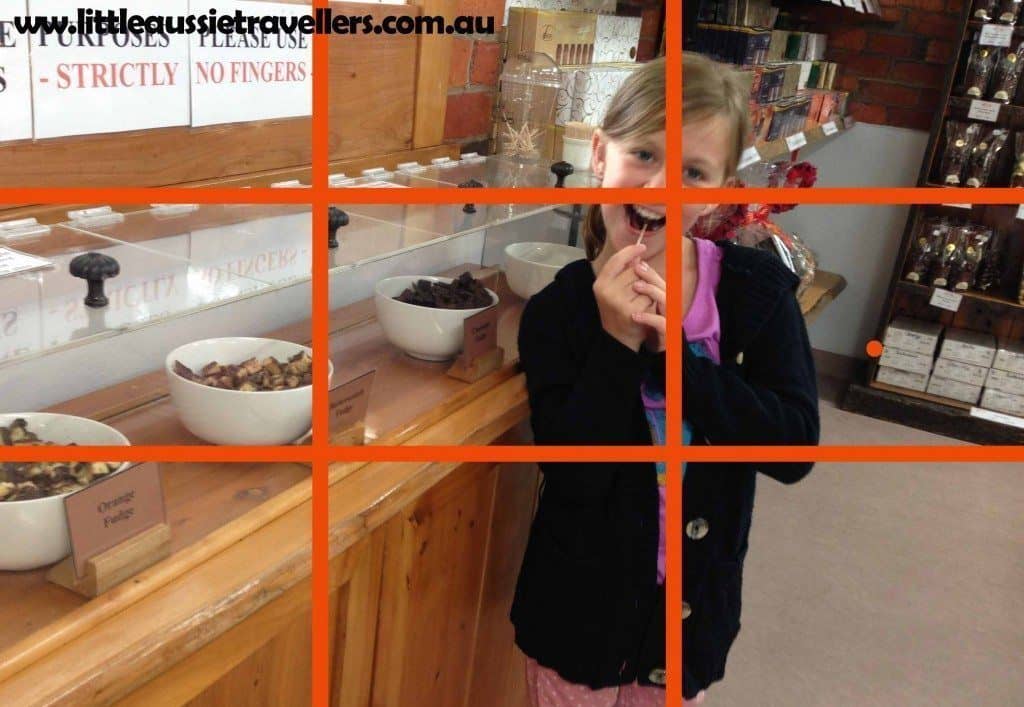
Notice What’s in the Background
Ever taken a photo and then noticed it looks like there’s a tree branch coming out of someone’s head? If you have time, take a little time to notice what’s in the background of your photo, it can make all the difference. Whatever you do, try to include interesting snippets in your photos, if you notice interesting signage, or something unique to the area you’re visiting, try to place it in a way that brings the memory of your holiday flooding back to you.
Ditch The Posed Pictures
Now there’s nothing wrong with posed pictures, and we take a lot of them so I’m not saying ditch the poses all together, they have their place, but try to be a little adventurous with taking some candid shots of the family enjoying their environment. Get the kids looking, playing, exploring, laughing, not just standing and saying ‘cheese’, it helps to remember the experience of your holiday.
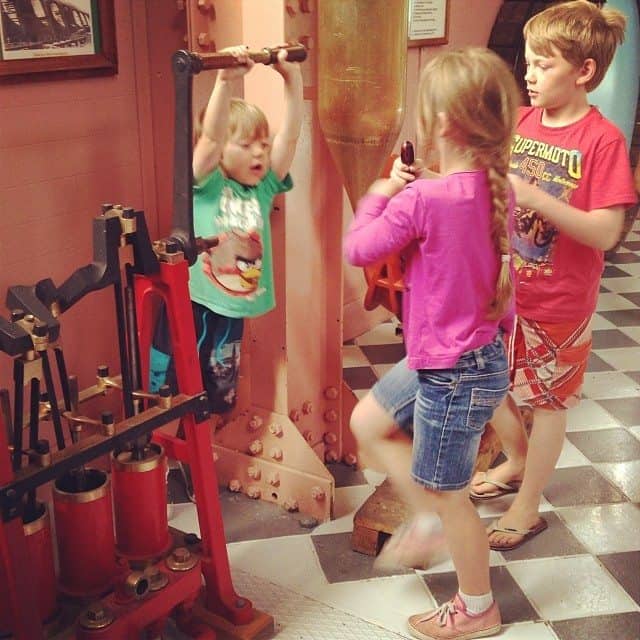
Don’t be scared to hand the camera to the kids either, and no matter the result, you’ll be sure to have lots of memories captured forever to look back on over the years.
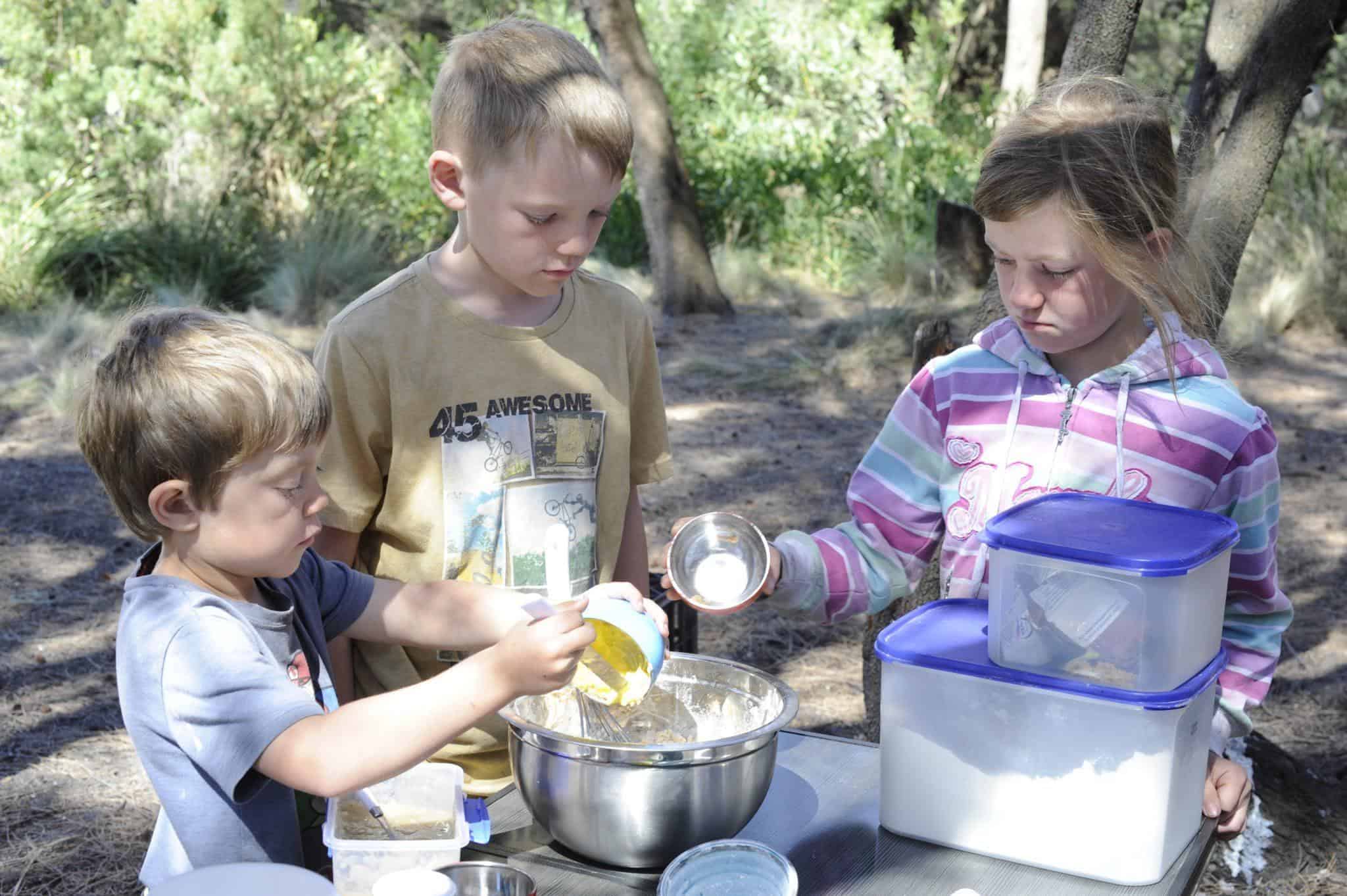
by Loreena Walsh | Australian History, Food
Cooking damper is something we do every night when we’re able to have a camp fire, and we get really surprised by how many people don’t know how to cook damper, or are worried about getting it wrong.
We’ve written about cooking damper here, and you can buy our damper cookbook from Kindle (other formats coming soon), but for today, here’s some information on the history of damper.
Damper is one of Australia’s most iconic symbols of bush life.
It was made famous by drovers, who baked this bush bread in the coals of their camp fire, and has been recognised as a staple of bush life for decades.
It is believed that Damper was originally developed by stockmen, who needed a way to carry food with them into remote areas. They’d sometimes be away for weeks at a time with little or no access to supplies, so weren’t able to carry foods that would spoil. Damper, in this case, provided them with a filling food option they could cook easily.
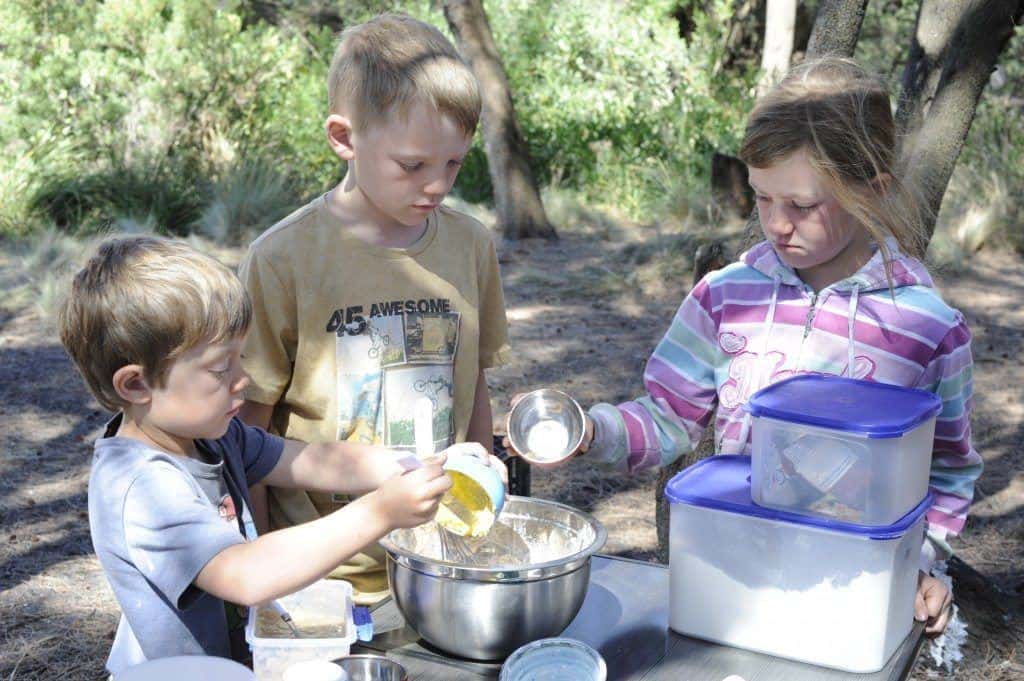
By simply carrying flour and salt, and having access to water, drovers and stockmen could cook their own bread, using these three ingredients. Traditionally the dough would be cooked straight in the “damped” coals of the camp fire, which is where many people believe the name damper originated. Alternatively, wrapping the dough around a stick and holding it over the flames until cooked was also a common way to cook.
Over the years, it became common to cook damper in cast iron camp ovens, and this is still a common method used today. Recipes have evolved to include the addition of milk, butter and lots of other additions. We’ve included tasty and fun variations in our recipes, and we’re sure damper will remain in Australian life for years to come, especially with its ease of preparation and cooking and the never ending variety that can be achieved.
Whether it’s over the camp fire, or in your home oven, damper is a fun, easy bread, and a great accompaniment to a tasty meal.
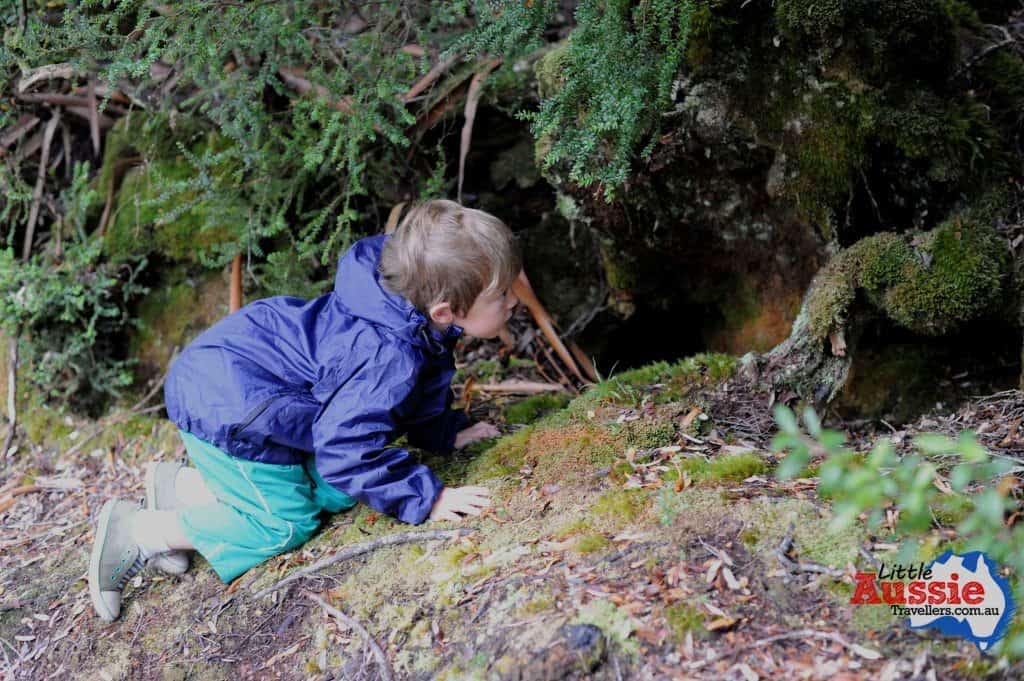
by Loreena Walsh | Camping
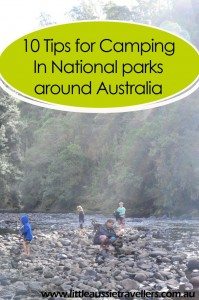
We’re really blessed with so much variety available for Australian holidays with options available for beach side fun to dry deserts, but one of my favourite things to do when travelling is to visit our National Parks.
Obviously because we are travelling Australia with our dog, our time camping in National Parks is limited, but before we were travelling full time it was one of our favourite ways to get out into nature, and during our time on the road we’ll kennel Yoshi when we need to because there’s some National Parks in Australia that are just too amazing to miss.
If you want to head out camping in National Parks, here’s our top tips:
1. Please DO NOT take pets and animals into National Parks.
It’s crazy the number of times we’ve done day trips or camping trips into National Parks, only to see people there with dogs or other pets. While as people travelling with a very well behaved dog we’d love it if we could take him with us, the rules are very simple: NO PETS ALLOWED.
This is for a good reason; The purpose of National Parks is to protect the fauna and flora inside them, and dogs not only scare the wildlife, but they can carry disease and attract other dogs into the area. Escaped pet dogs are also the cause of Australia’s large number of wild dog populations which decimate wildlife and cattle across the country.
2. Some Camping in National Parks is Free, Some is not.
It’s important to check out if the National Park you want to camp in is free, or is paid and requires bookings. While many of the more remote campgrounds are free and made available on a first come first served basis, for some of the more popular National Park campgrounds pre-booking may be necessary, especially in peak periods.
3. Some National Parks Require Passes for Entry.
In more regulated tourist areas it’s likely you’ll need an entry pass into the National Park. Some National Parks are available for people to come and go as they please, while others will have options for day visitors to purchase an entry pass. When payment is required, there will usually be a payment box that allows you to take an envelope and pay your days entry and acquire a pass to show on your vehicle.
4. Each State of Australia has Different National Parks Requirements.
It’s not possible to purchase a single pass that covers you for all National Parks. When you’re planning to head to a State, our advice is to check out the website for that state’s National Parks and research the requirements and the passes available. When we were in Tasmania it was cheaper for us to purchase a 60 day pass as we’d be visiting a couple of National parks over our time there than it was to purchase separately for the days we’d be entering, this is often the case.
5. Leave Camp Areas Clean or Cleaner than You Find Them.
National Parks are an important part of conservation of Australia’s plants and animals and when you visit them, you may find there aren’t any rubbish facilities. It could be that they are remote, or just financially it isn’t possible to provide rubbish services. PLEASE take your rubbish with you. If you find a campsite in a mess, notify a ranger if you bump into one, or call the National Parks office for the state you’re in to let them know; alternatively clean up what you can and take it with you.
6. Don’t Mess With The Natural Environment.
If it wasn’t introduced by visitors, then don’t take it out of the National Park. It is illegal to remove flora and fauna from a National Park, and while it might not seem like a big deal for one person to do it, if every visitor took something they found it would have horrible consequences. The same goes for firewood. Please don’t fell trees or use fallen timbers for fire wood; it’s important for the eco system that wood isn’t removed from the habitat.
7. Don’t Feed The Wildlife
It’s also important not to feed the animals, although this doesn’t just apply in National Parks, it applies to anywhere in nature that you’re camping around native wildlife. Not only does feeding the animals pose a risk to their health and can make them sick, it can also familiarise them to humans and make them more confident in approaching camps. For animals who can pose a threat to humans, if they become too placid they can become food aggressive and may need to be euthanized to keep the area safe. Not feeding the animals prevents innocent animals having to be put to sleep.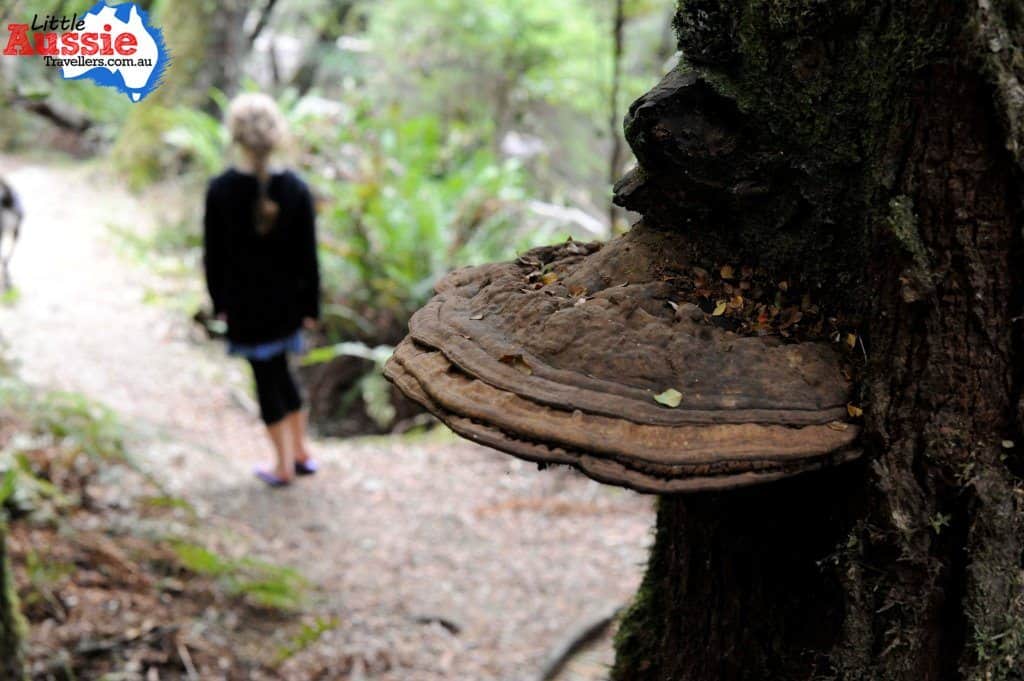
8. Stay Tidy or You’ll Regret It.
Trust us on this one: Keep your rubbish and food packed neatly away. While you’re snoozing of a night, lots of animals will come out to play, and it’s your food and goodies they’ll be excited to rummage through. If you don’t keep your rubbish out of reach of the animals, you can rest assured you’ll wake in the morning to find it strewn across your campsite. If you don’t pack your food in animal proof containers, then don’t expect it to be waiting for you to eat the next day. Animals aren’t silly and they’ll take any opportunity you give them to grab your goodies.
9. Take Everything You Need With You.
Most National Parks won’t have facilities for you to purchase food, and in many cases won’t even have water access points. Please be sure you have enough supplies on hand, especially drinking water as it can sometimes be quite a distance to get to a town for supplies. You’re going to have to be totally self sufficient for the most part, this could also mean there aren’t toilets available so you’ll need to take your own or get comfortable with safely digging your own bush toilet. Bush showering is also likely for long stays although more popular National Parks have some kind of toileting and showers available although often cold. Here’s some of our camping tips if you’re not familiar with camping remotely.
10. Enjoy and Be Safe.
Just get out there and explore, enjoy and follow the paths. Don’t go wandering into areas without designated paths unless you’re highly familiar with the area and know what you’re doing. Do, sign on for walking registers. For more popular National Parks there are registration sheets to help rangers track walkers to ensure that everyone returns safely. Do go prepared with plenty of water, snacks and a first aid kit including a snake bite bandage. Take photos, video, make memories and have fun, we’re blessed to have such amazing outside places to explore.
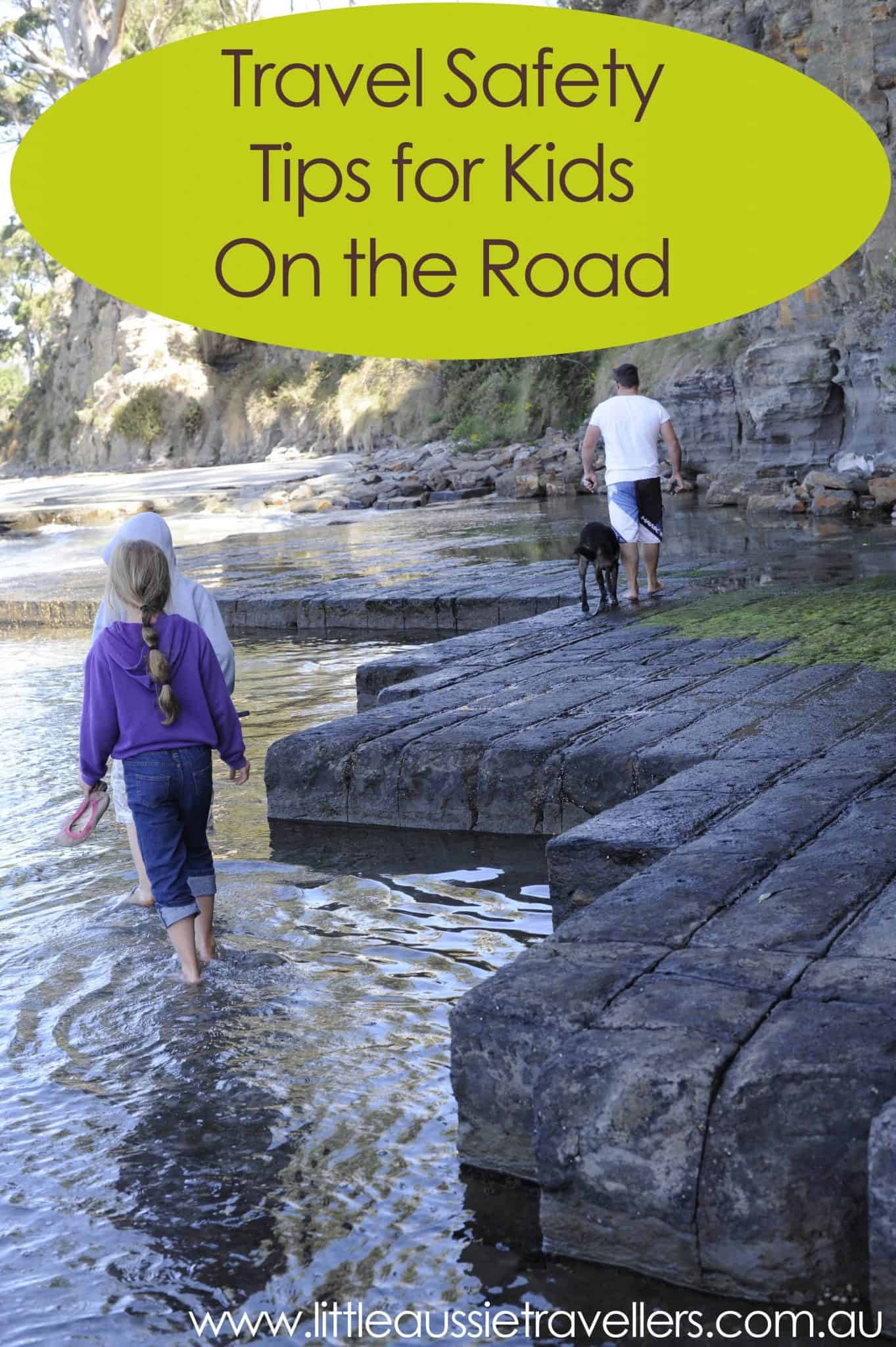
by Loreena Walsh | Family Travel
It’s important for every parent to talk to their children about how to keep themselves safe. Should the worst case happens and you’re child becomes separated from you, then it’s vital that they know what to do, and how to keep as safe as possible until they can reunite with you. We get asked a lot for travel safety tips for kids, so here’s our thoughts.
It’s a sad fact of life that kids go missing across Australia, and while it’s easy to teach kids about safety and danger within their own, regular neighbourhoods, as a family travelling in Australia, it’s important for our children to be street smart and really aware of their own safety and have coping strategies to use should they find themselves scared, lost or threatened.
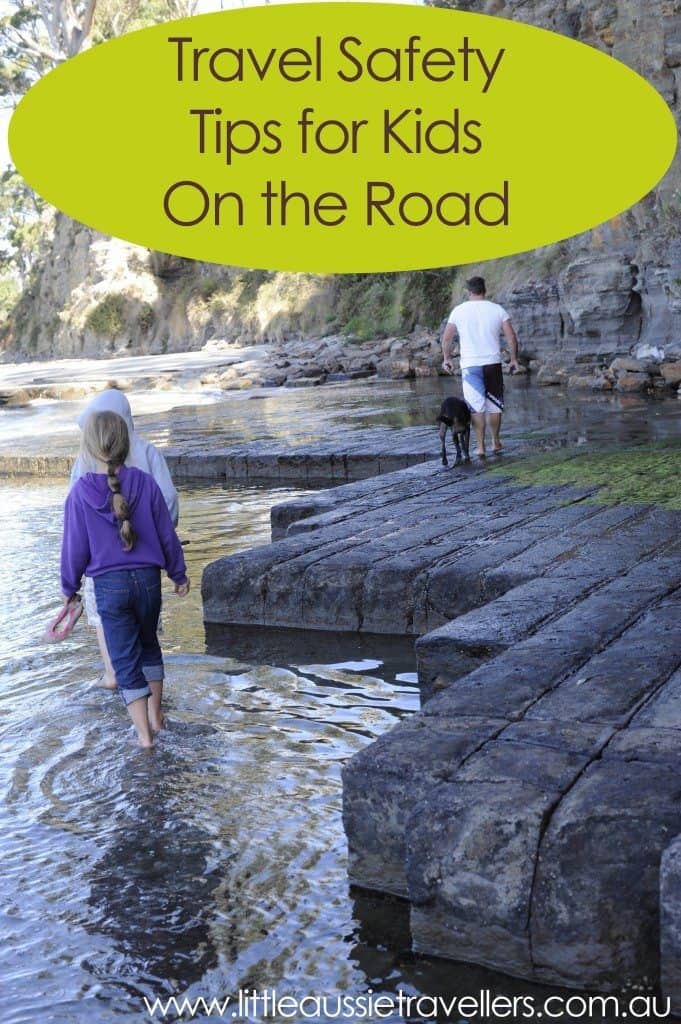
If there is any family that has suffered so publicly and touched the hearts of so many people, not only from Australia, but around the world, then the Morcombe’s are that family. Their son Daniel was abducted and after many years of searching, a man was finally found guilty of his murder. The scary thing is, that the Morcombe family are just like all of us, and I’m sure like so many they never for a single moment believed their world would be turned upside down.
But if there is anyone in the world I admire for their strength, endurance and dedication to changing the world, then Bruce and Denise Morcombe would be those people. The Morcombe’s now spend their time helping to develop programs to teach children about safety, and regularly hosting presentations.
Here’s some tips the Morcombe’s Give to Kids:
“Our son Daniel did not get a second chance. His legacy is that you can learn from this tragic event and make sure it does not happen again. Daniel has given you that second chance.
- When you can, stay with a friend. Even if you have a fight with your mate, don’t go off alone.
- Be observant. Notice who’s around you and what they’re doing.
- Have a family password. Something like your favourite food – lasagne, for example. If a person says they are meant to pick you up, test them on the password.
- With your parents, make a list of 5 adults you trust. If you ever feel uneasy about anybody or anything, tell one of these people and know you won’t get into trouble. If you feel you’re not being listened to, try someone else.
- Don’t share information about yourself, like your hobbies or the name of your school with people you don’t know, online or in real life.
- If something feels wrong, it probably is. Trust the butterflies in your stomach – they could be a sign something’s not right.
- It’s okay to run and scream if you feel threatened. Safety is more important than good manners.”
It’s not a nice subject to think about or talk about, but I know I am super conscious of where my kids are at every second we’re in a new environment, and that’s quite often when you’re out on the road. I’ll be discussing the above strategies with my kids although as we’re not at home some of them won’t be as relevant.
The trick is to be cautious without being fearful, a life lived in fear isn’t a life lived fully is it?
If you’re a family travelling then one thing you will learn is that there are wonderfully kind people everywhere. We seem to be surrounded by amazing, free spirited people who share their stories and experiences with us and others and it truly does open your eyes to the kindness of human nature. But, of course things can happen, whether you’re at home, or on the road and it pays to ensure your children are cautious but not overly fearful.
We set boundaries and use techniques that help our kids stay safe, keep in mind our kids are 11, 9 & 7 and they are mature enough for us to have begun giving them greater responsibility and slowly increase their freedom, if your children are younger, then some of what we do might not apply.
Here’s our tips for child safety when travelling.
- Use small handheld walkie talkies – We purchased these before we hit the road, and they are a great option to give the kids some independence without losing contact of them all together.
- Dogs are great for safety – We have our dog on the road with us, he’s a Kelpie and really friendly, but his best feature is loyalty and I have no doubt whatsoever if anyone tried to harm the kids he’d come straight to their defence.
- Safety in Numbers – Our kids don’t go anywhere alone, if one goes they all go. This helps because of their age and the fact there’s three of them. It would be more difficult with only children of course, but we find this rule works for ours.
- Discretion with Online Info – I rarely post photos or activities that we’re doing on the day or time we’re doing them. Yes, we have a popular travel website and yes we post on social media, but my foremost thought is safety for our kids, so you’ll rarely see us post real time activities unless it’s appropriate.
- Give Guidelines – If our kids are offered something by other travellers, and they often are, then they know they must come and ask our permission first. They know not to enter anyone else’s caravan unless we have approved that and know they are there, and they know to ask before they leave our field of vision.
- It’s important for us to let go as parents. I’m mindful that I’ve always been unapologetically careful of where my kids are and what they’re doing but they are getting older and part of growing up is learning how to operate safeul in the world

 As part of our best-selling ebook “How to fund your trip around Australia“, we included a handy calendar based fruit picking and harvest table which shows a break down of regions offering harvest, fruit picking and farm work around Australia, as well as the times of year they are likely to be looking for workers.
As part of our best-selling ebook “How to fund your trip around Australia“, we included a handy calendar based fruit picking and harvest table which shows a break down of regions offering harvest, fruit picking and farm work around Australia, as well as the times of year they are likely to be looking for workers.





















